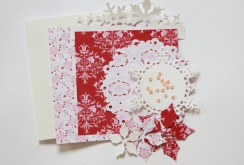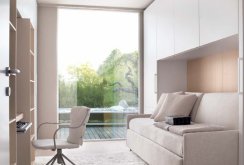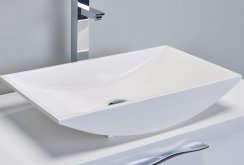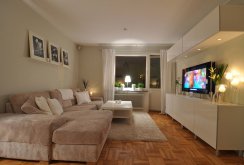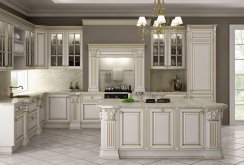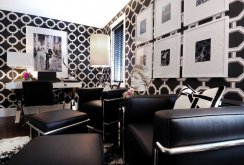Greenhouses: what you need to know when choosing a quality design
The greenhouse is used for growing seedlings, vegetables, fruits and even exotic plants. The design consists of a frame that is fitted with a transparent material. Frames are made of plastic, wooden, metal. In any case, the materials are durable, reliable, lightweight. Roofing material is film, glass, polycarbonate, the main thing is that the material is transparent and durable.Types and designs
The choice of option for greenhouses depends on what they grow in, on the area on which it will be installed and on the cost. There are several varieties of greenhouses:- Classical The greenhouse is traditionally executed gable. The structure is installed separately or adjacent to the wall of the building. It is equipped with heating, lighting, supports. Vegetables, seedlings, greens are grown.
- Polygonal. The construction is excellent for growing cucumbers, as it has several walls arranged vertically to which supports can be made. Such greenhouses are often overheated in the midday heat, therefore, they need constant ventilation.
- Arched. It is good to use for root crops and low vegetables. The design includes arc supports made of metal, plastic, wood, which are covered with roofing material. The early harvest ripenes well: lettuce plants, radish, greens.
- Pyramidal. Ideal for growing seedlings and low vegetable crops. Pyramid greenhouse for the right temperature requires a minimum amount of electricity. Suitable for stunted plants.
- Mini greenhouses. A compact greenhouse is usually located above a warm bed. Heat-loving greens are grown in a hotbed. Mini-greenhouses are better covered with agrofibre, as they overheat strongly in the midday heat. Regular ventilation and, if possible, shading during the hot season are required.
- Dutch This design has side walls that expand below. Compared to the gable view, the Dutch greenhouse is the most stable, but not easy to install. Place the structure in an area that is well lit. The position of the walls allows a large amount of light to pass through. Light-loving vegetables perfectly grow in it: eggplant, tomatoes, peppers. To grow tall vegetables in such a greenhouse is problematic, since it is difficult to establish supports in it.
Materials
The following materials are used for the production of greenhouses:Glass
The material is fragile and heavy and requires a solid foundation. Glass has the following advantages:- high light transmission;
- creating an optimal microclimate;
- not exposed to chemicals;
- Long operation possible with proper handling.
Film
Polyethylene film has several advantages:- lightweight construction;
- easy to cut;
- simplicity in installation;
- warms up quickly;
- does not require the construction of a foundation;
- low cost.
Polycarbonate
An excellent material for the greenhouse is cellular polycarbonate. Its advantages are:- long term of operation;
- huge throughput of sunlight;
- high impact resistance;
- good thermal insulation;
- flexibility;
- no need for a solid frame and foundation, due to the lightness of the material; fire safety;
- resistance to chemicals.
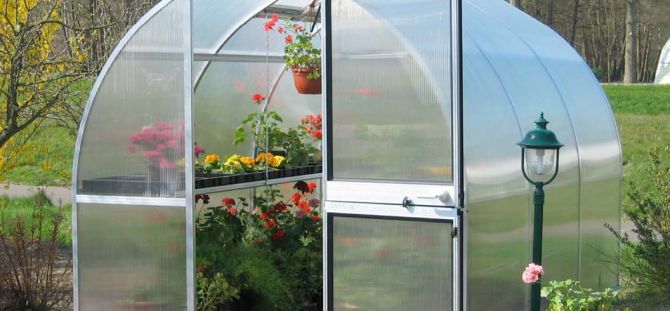
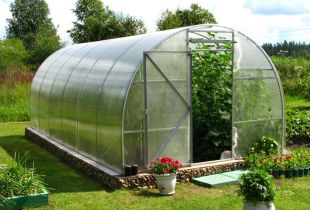 Greenhouse heating: important parameters (20 photos)
Greenhouse heating: important parameters (20 photos)
